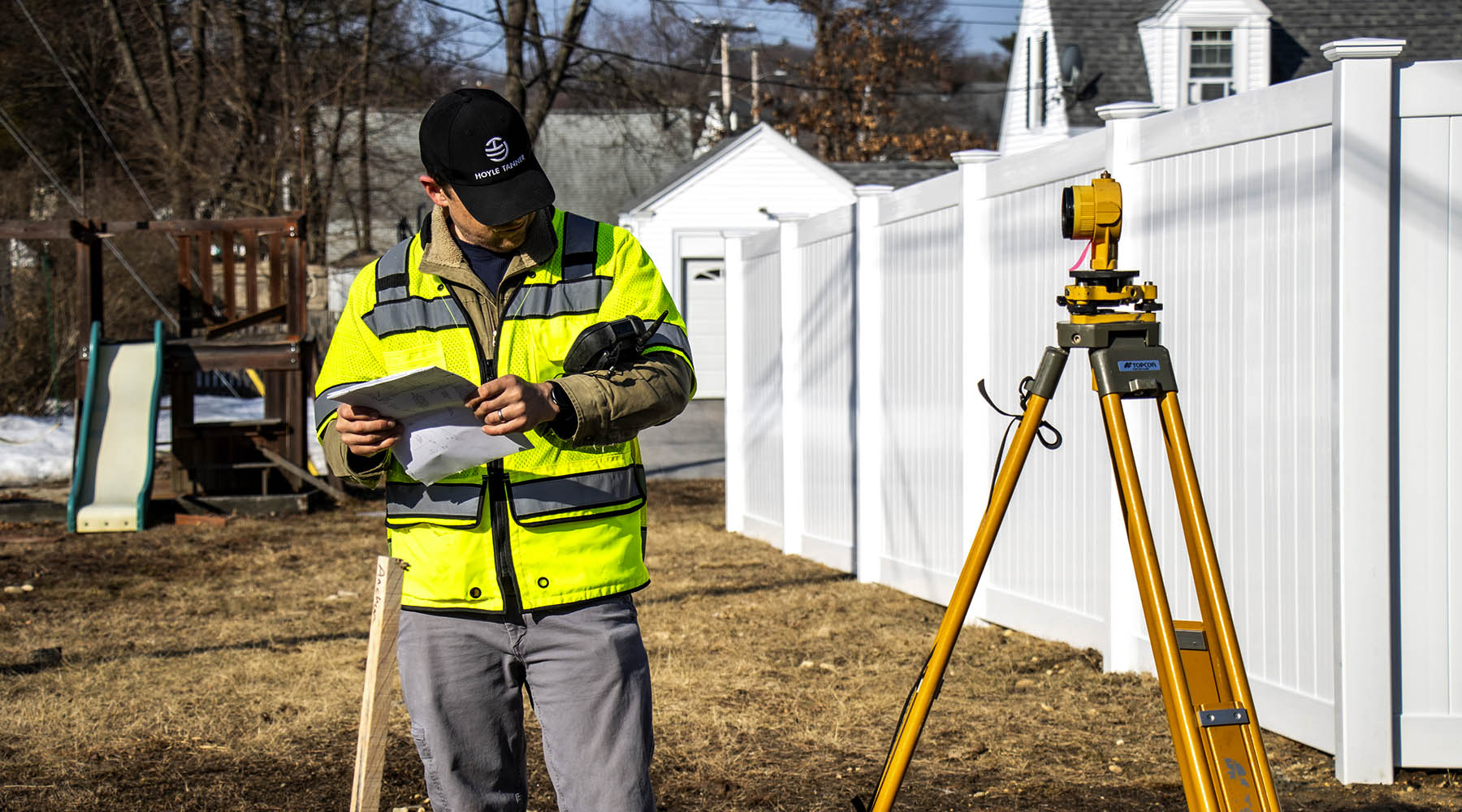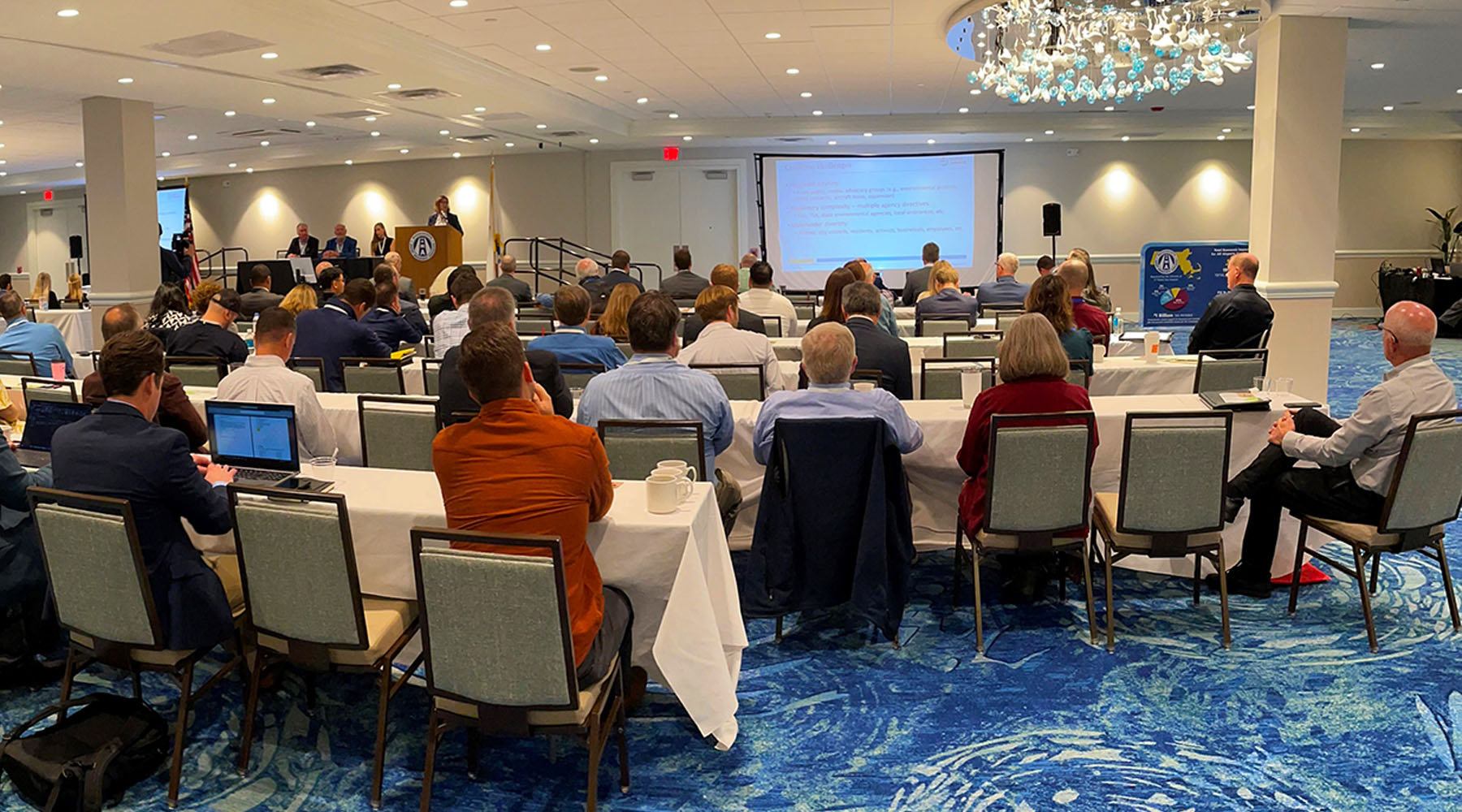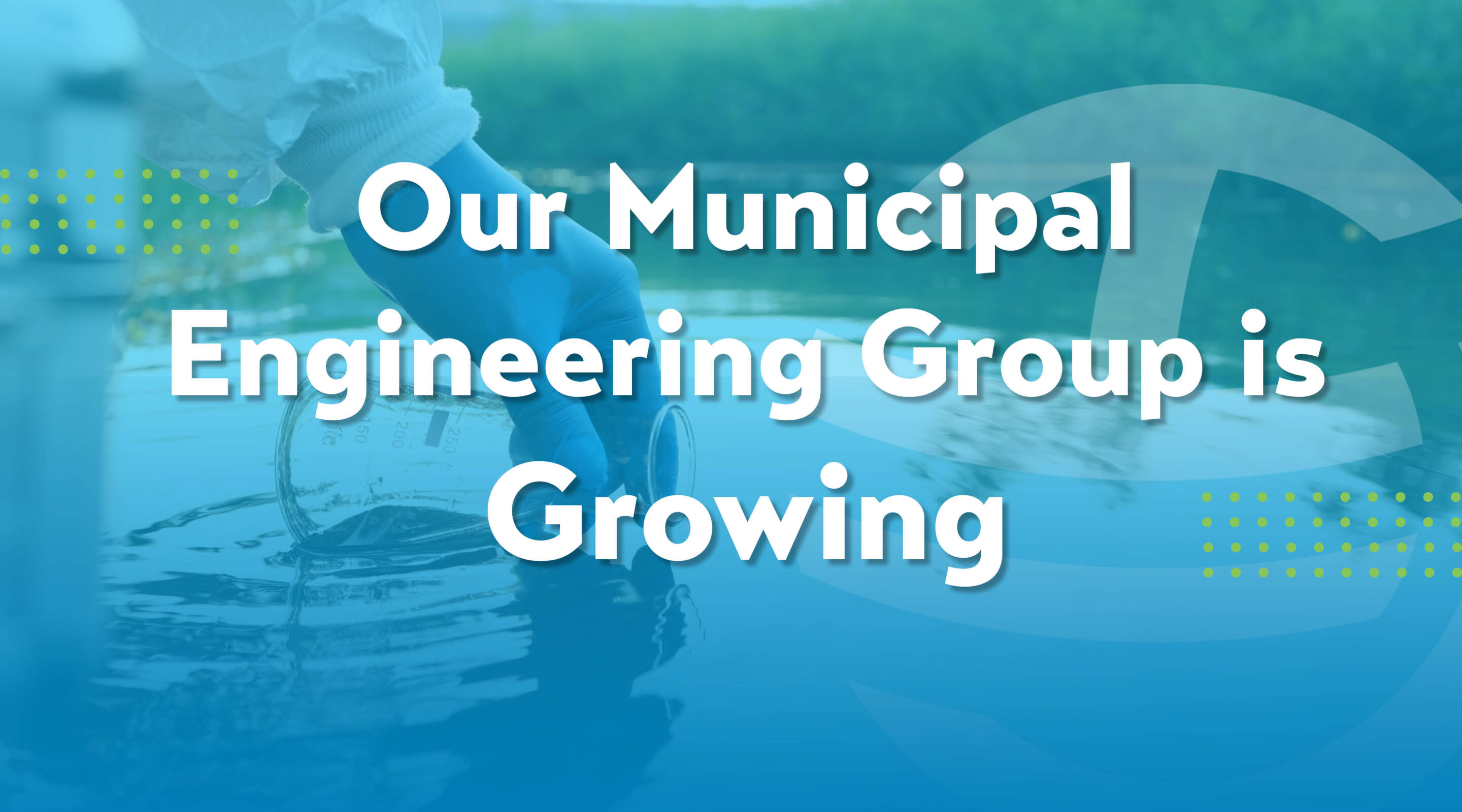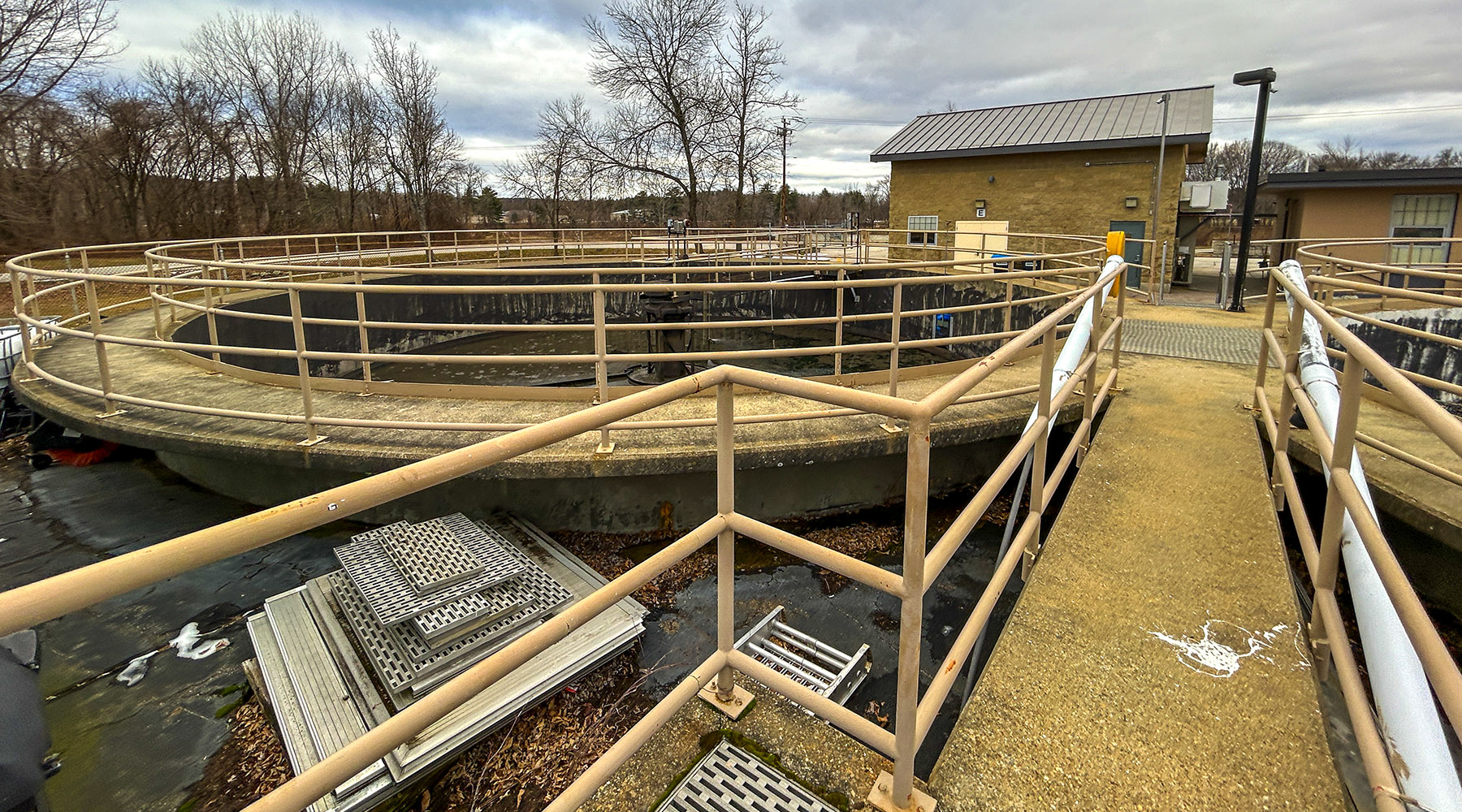The Amoskeag Bridge in Manchester, New Hampshire, is undergoing a significant rehabilitation project aimed at extending its service life. Constructed in 1970, the bridge is now 55-years-old and serves as one of only four river crossings in downtown Manchester. It carries approximately 26,000 cars daily, making it a critical infrastructure component for the city. The bridge provides primary access to I-293 in northern Manchester and serves as a vital pedestrian and bike connection, despite lacking adequate facilities for these modes of travel. Through both traditional and state-of-the-art traffic control technologies, our team’s objective was to allow for the bridge’s rehabilitation, while continuing to provide a safe and efficient crossing for those residents who rely on it.
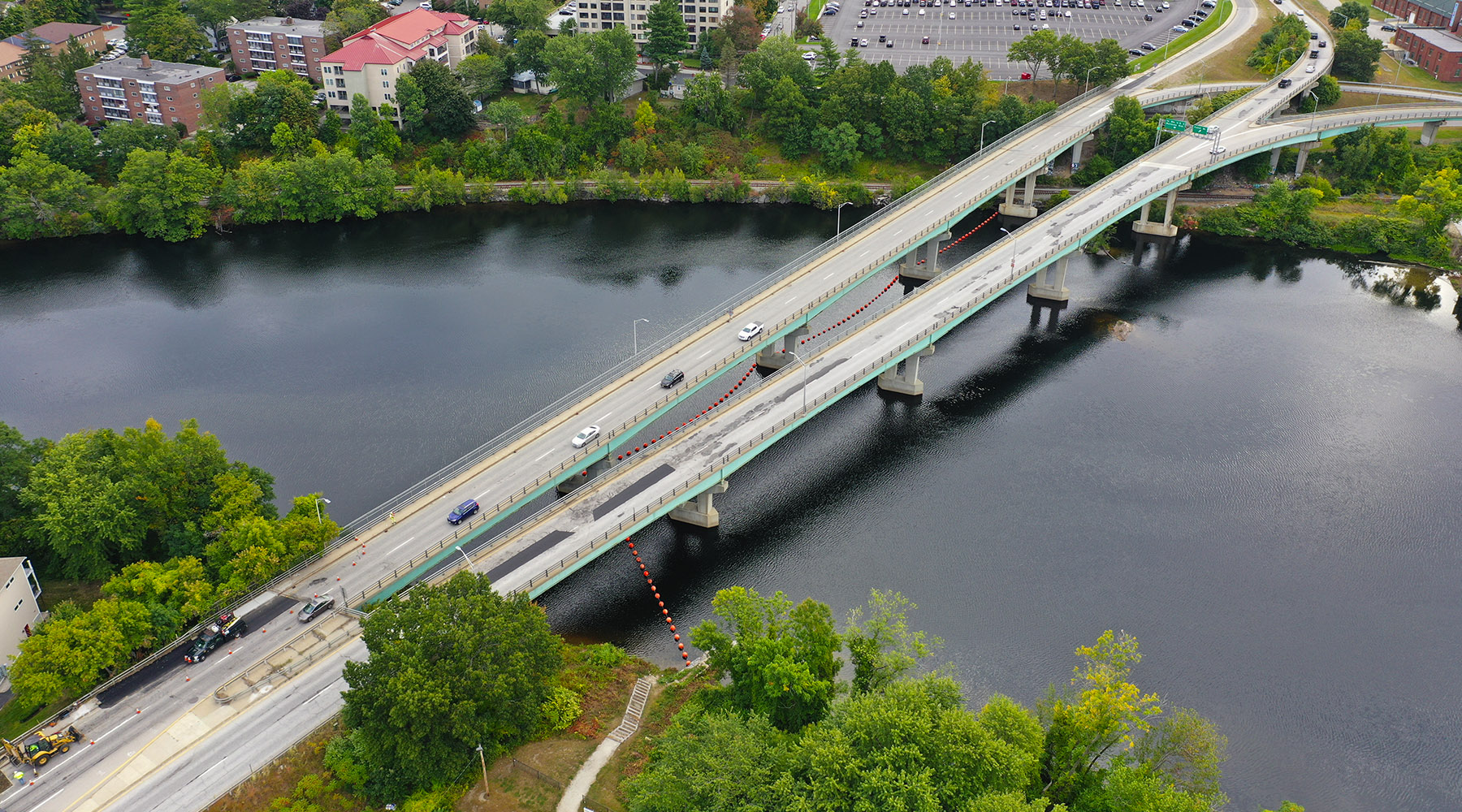
Project Goals & Scope
The primary goal of the Amoskeag Bridge project is to extend the bridge’s service life through a full deck replacement. This involves general bridge design, including the deck replacement, repainting, and necessary repairs to both the superstructure and substructure. The superstructure includes the deck and beams, while the substructure consists of the piers, foundations, and abutments. The project also encompasses general roadway design related to the bridge, such as repaving the approaches, addressing guardrail, drainage, signage and pavement markings, and minor curb work.
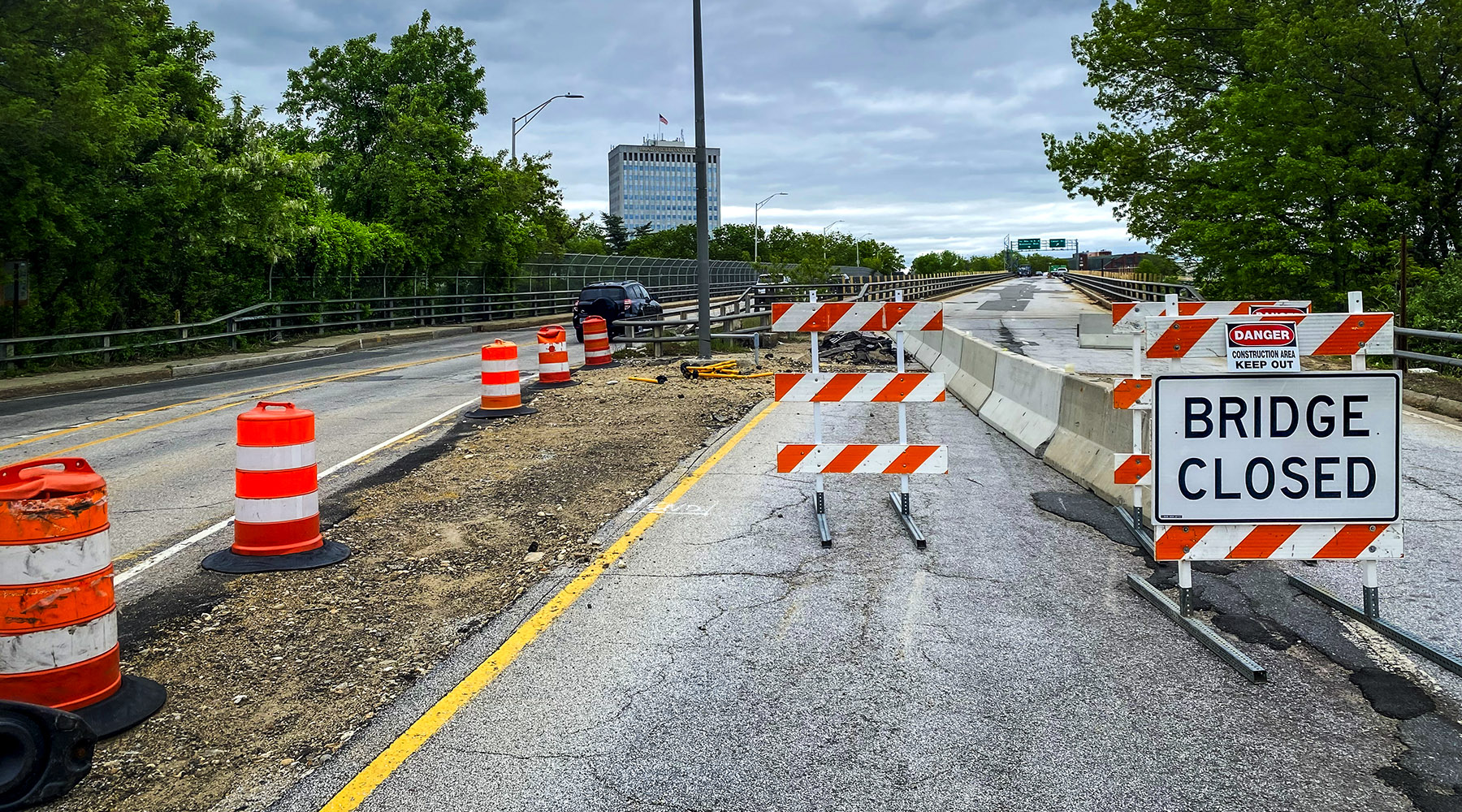
Traffic Control & Public Outreach
One of the most challenging aspects of the project is traffic control. The project team has developed a comprehensive traffic control phasing plan and a public outreach component to inform residents and commuters about the project’s impacts. The traffic control plan includes a crossover strategy, where eastbound traffic is diverted to the westbound bridge, reducing both directions to one lane. This approach minimizes construction costs and shortens the timeline, reducing public impact from three to two years.
Additionally, the project features a smart work zone setup on I-293 and other highways around Manchester. This system uses microwave sensors and cameras to detect congestion and alert motorists via message boards, encouraging them to take alternate routes when necessary. The city conducted traffic counts prior to and during construction, revealing a 12-15% reduction in daily traffic and up to 25% during peak hours, indicating successful diversion efforts.
Public Outreach Efforts
Public outreach has been a crucial part of the project, with several meetings held during the design phase. Although attendance was limited, the team made efforts to inform the broader community, including those who use the bridge but do not live nearby. Messaging in advance and strategic placement of message boards have helped manage public expectations and encourage traffic diversion.
Challenges & Progress
Despite the project’s complexity, the traffic control measures have been more successful than anticipated. The team has leveraged past experience from a prior rehabilitation in 1999 to inform their approach. The smart work zone and effective public outreach have contributed to smoother traffic flow and minimal congestion.
The project is expected to take two years to complete, with the possibility of finishing sooner if the contractor can expedite certain phases.

Conclusion
The Amoskeag Bridge project is a critical infrastructure initiative aimed at extending the bridge’s service life and improving traffic flow. Through innovative traffic control measures, smart work zone technology, and effective public outreach, the project team is minimizing public impact and ensuring smooth progress. As the project continues, the community can look forward to a safer, more efficient bridge that serves all modes of travel. Reach out to me if there’s a traffic control solution needed in your community!


